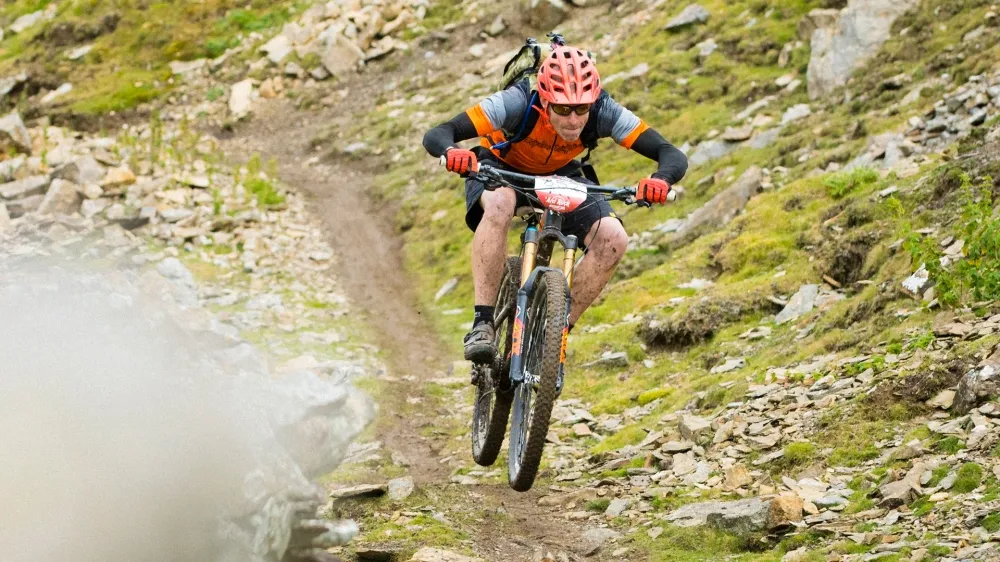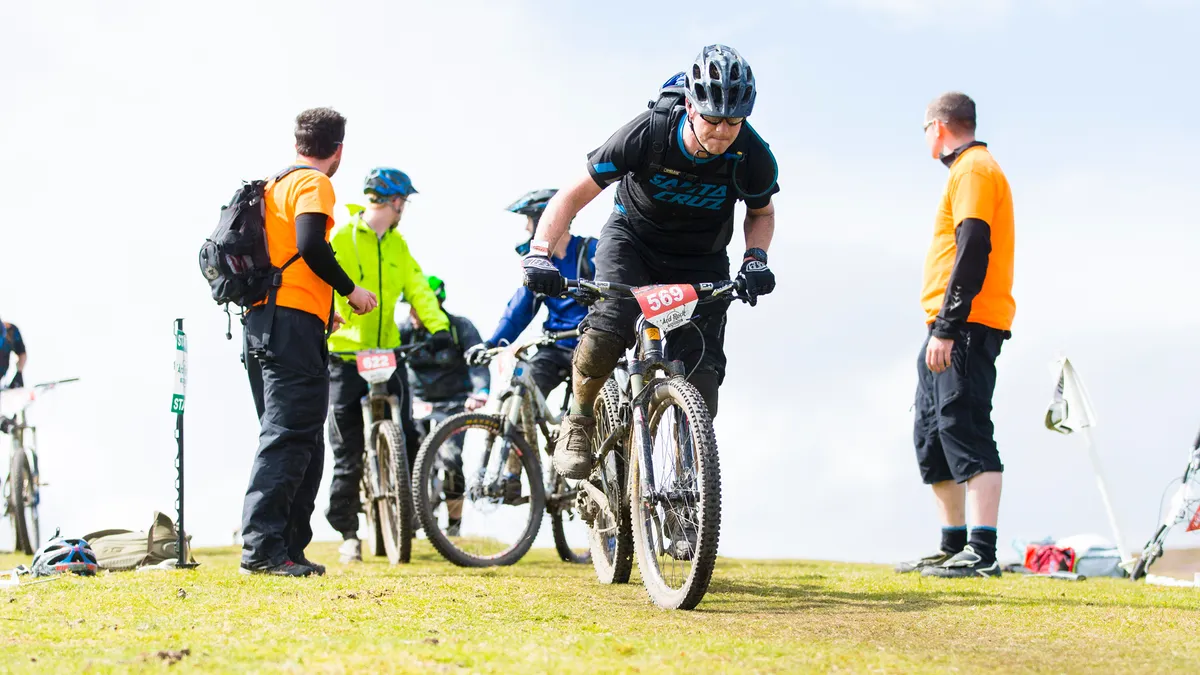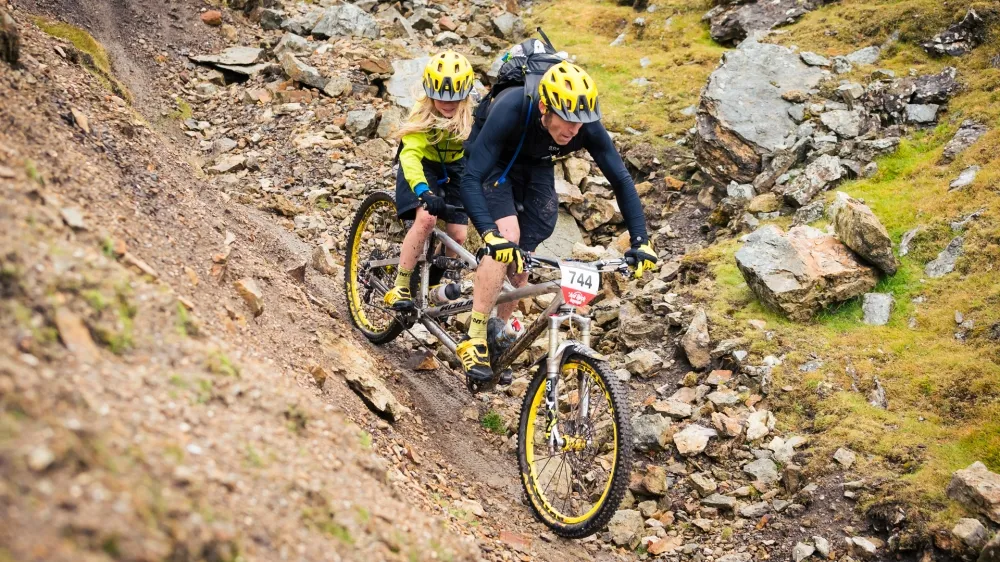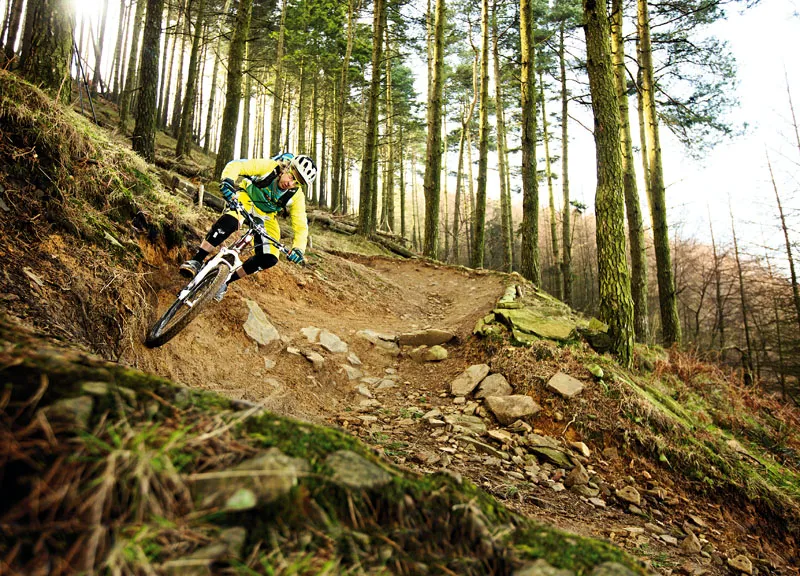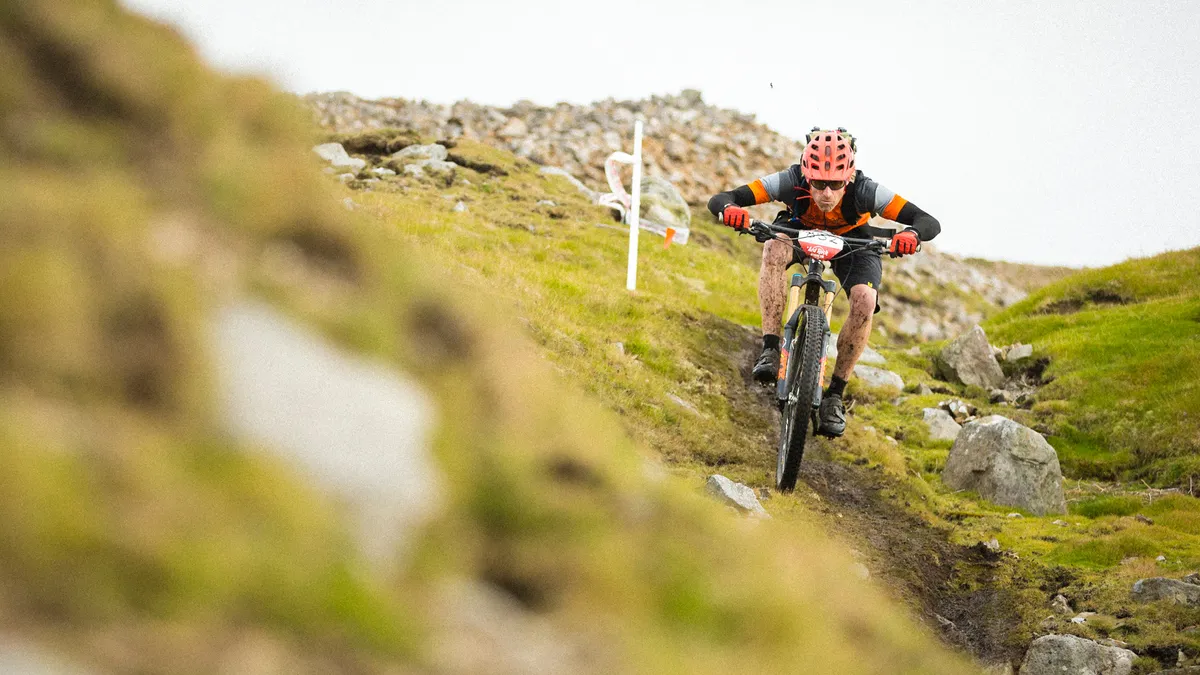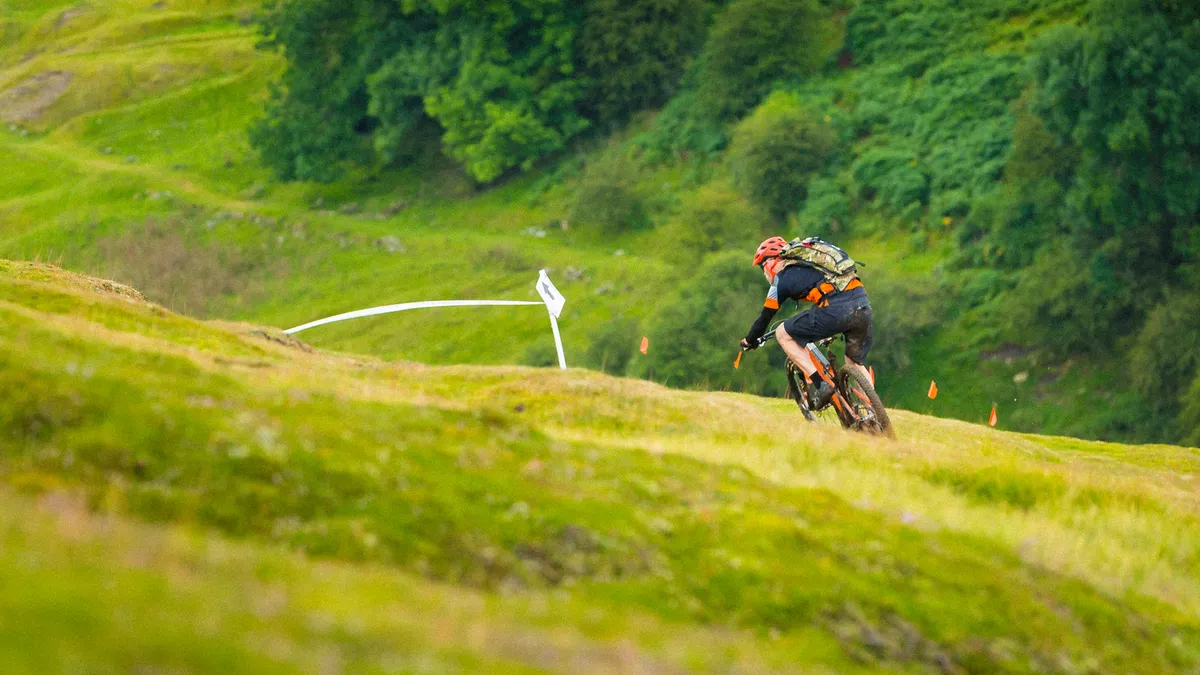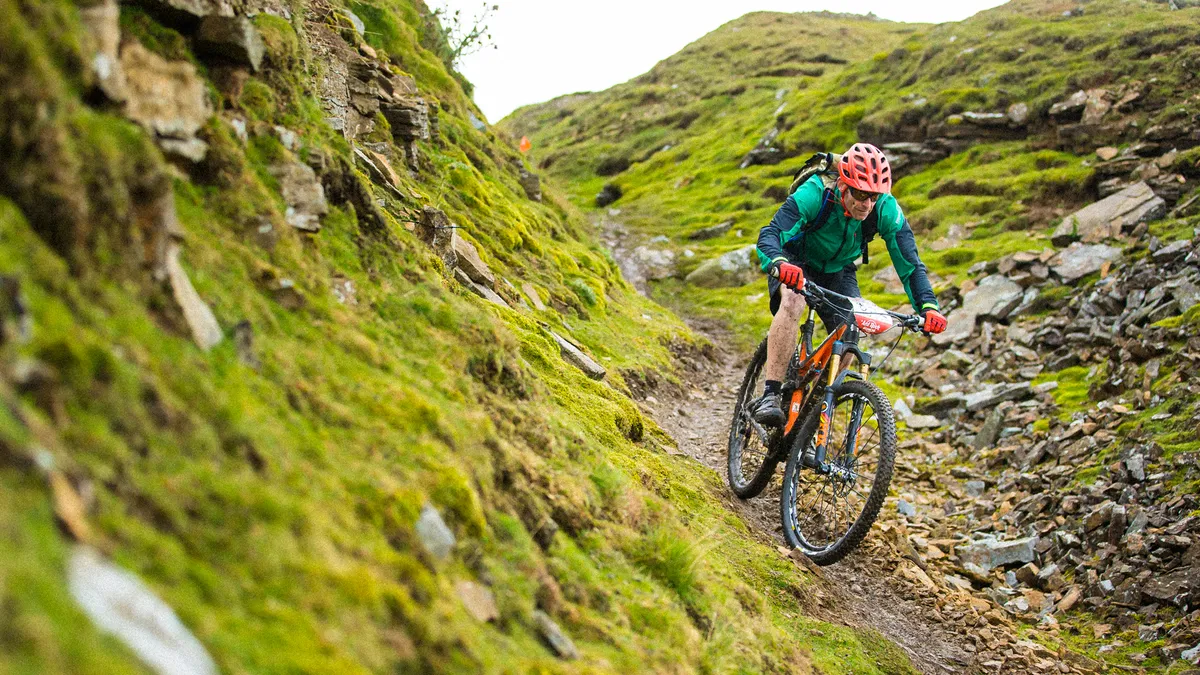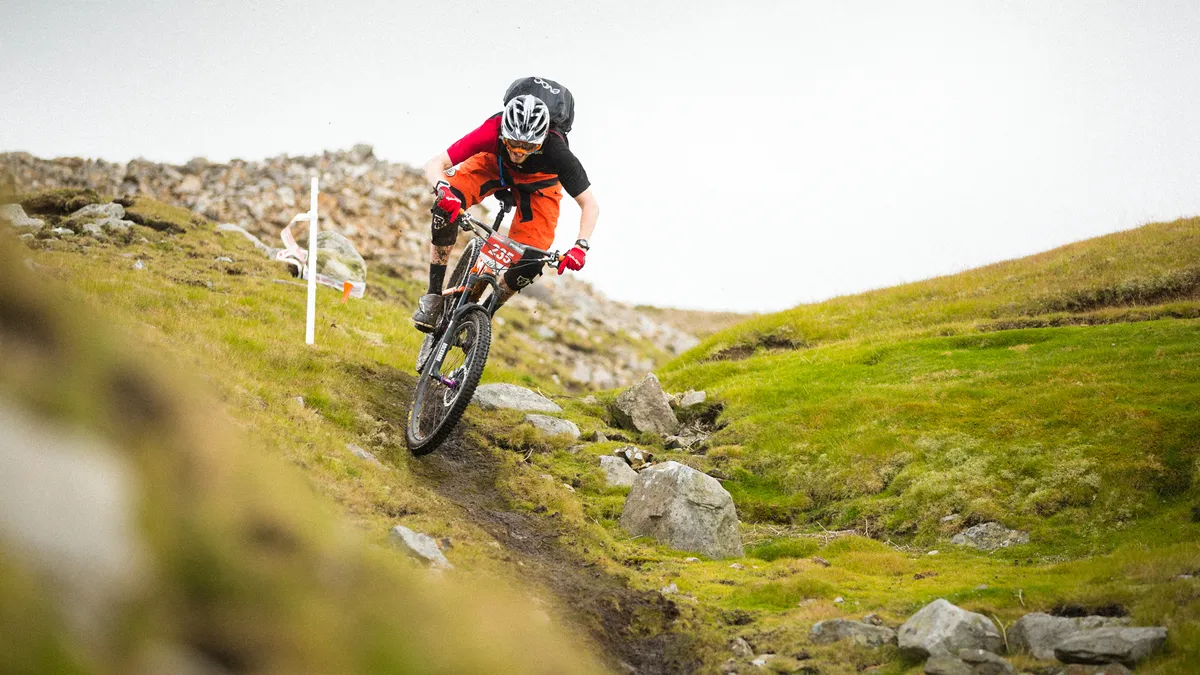If you want to race an enduro rather than simply survive it, you’ll need to practise your skills to ensure you perform at your best. A full day in the saddle, with up to 30 minutes of flat-out racing, is no easy ride. Maintaining your strength, focus and skill throughout is pivotal to finishing safely and successfully.
You’re racing against the clock throughout the craziest of descents at lung bursting intensity, and then pacing back up the climbs to ensure you’re ready for the next stage. To succeed you’ll need more than just a flash bike – fitness, skill, focus, equipment and planning are all essential elements to consider. In this article we’re discussing seven essential enduro skills to help you perform better.
'Ard Rock
The Santa Cruz ‘Ard Rock enduro combines rugged off piste riding with beautiful scenery and a festival atmosphere. Every year the BikeRadar and Mountain Biking UK team make their way up to Swaledale in North Yorkshire to tackle some of the UK’s most unique riding and racing. It’s supported by some of the mountain bike industry's leading brands, which include Sweet Protection and Mavic. Full factory support is available from SRAM, and other leading companies such as Julbo Eyewear and Transporterland.com are supporters of the event. The ‘Ard Rock is the highest participation enduro event in the world, with nearly 2000 competitors racing over the weekend. If enduro isn’t your bag then check out the ‘Ard Rock MTB Marathon, which is a 40-mile adventure ride in the same area. Visit the 'Ard Rock enduro website for more information
Starts
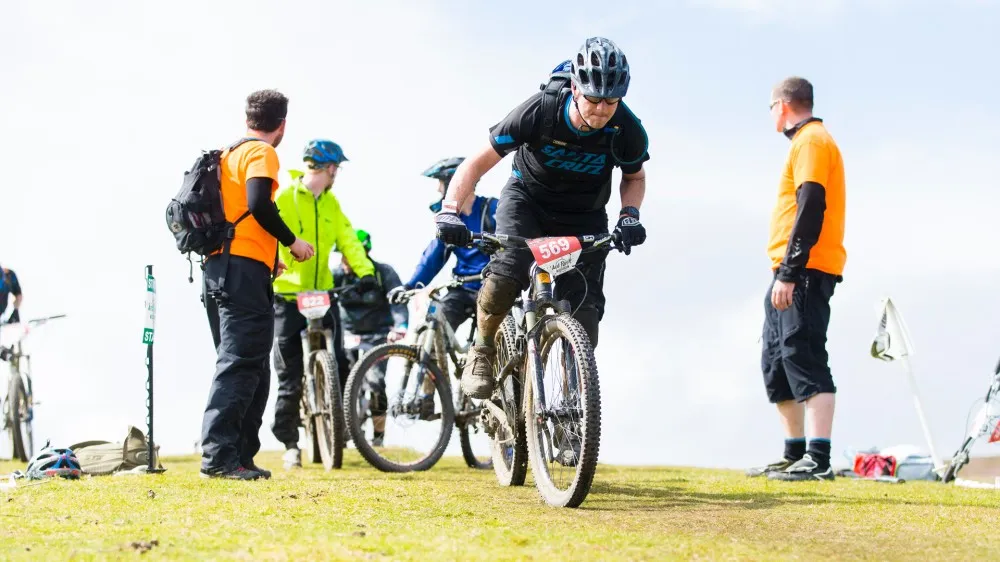
Getting a clean and powerful start on each stage and floating through that sketchy rock garden could be the difference between coming first and third
Muscle memory – 10 minutes before the first stage, practise three sprint starts at full power for 20 seconds on an easy track, loosening your body, calming nerves and limiting the adrenaline/lactic surge that makes you feel pumped.
Get loose – relax your body and keep your mind calmly focused. Being tense and stressed will not help your performance or your ability to flow.
Gearing – depending on start steepness and run-out, ensure you can sprint off the line in a lower gear and change rapidly (practise!) to higher hears to increase speed.
Power pedal position – with clips, learn to balance with both feet in before the ‘go’, maintaining weight on rear tyre for traction when driving off. With flats, same as clips or two o’clock pedal position with power foot forward.
Line – the starting area can get messy quite quickly. Look for the smoothest line with the most traction – it might be right down the side of the developing rut.
Line choice
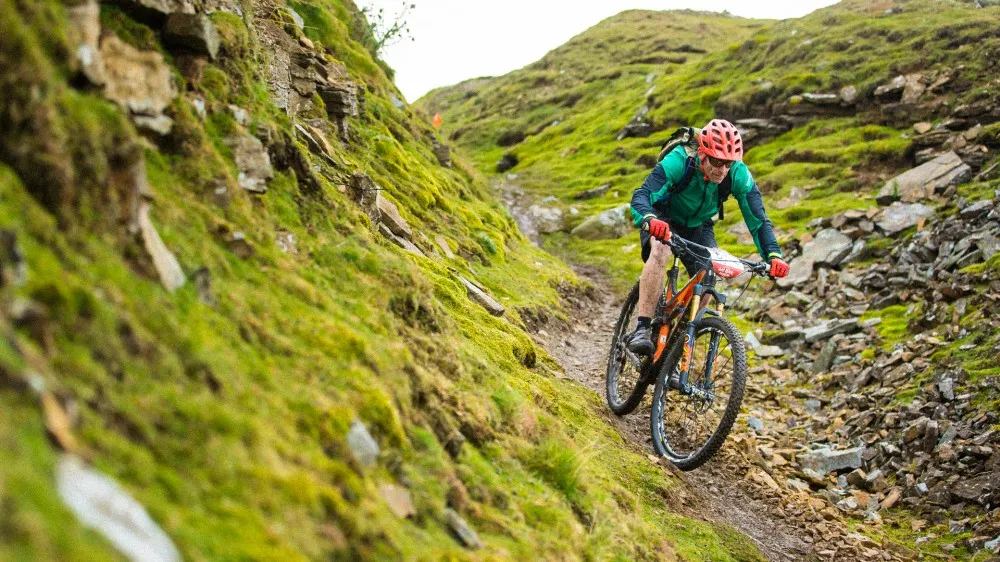
Good line choice will help you keep your speed through corners and avoid speed sapping features
Keep your head up – the higher you look, the lower your speed feels and therefore the faster you can ride. Looking further ahead gives you more time to plan your line and flow.
Don’t stare – rocks, roots, ruts… if you stare at them you’ll be dragged into them. Focus on the line and where you’re going, not where you don’t want to go.
Line up wide – give yourself more options and higher exit speed by entering wide into turns and corners. Making your turns bigger will allow you to go faster.
Smooth the trail – look for cleaner and straighter lines to conserve momentum. Transferring from side to side on the trail may run faster than smashing through the rocks in the rut.
Entry to exit speed – set your speed early, as if you can stay off the brakes throughout the turns you’ll exit with greater speed. Aggressive braking and pedalling can be tiring and also slower than flowing.
Flow
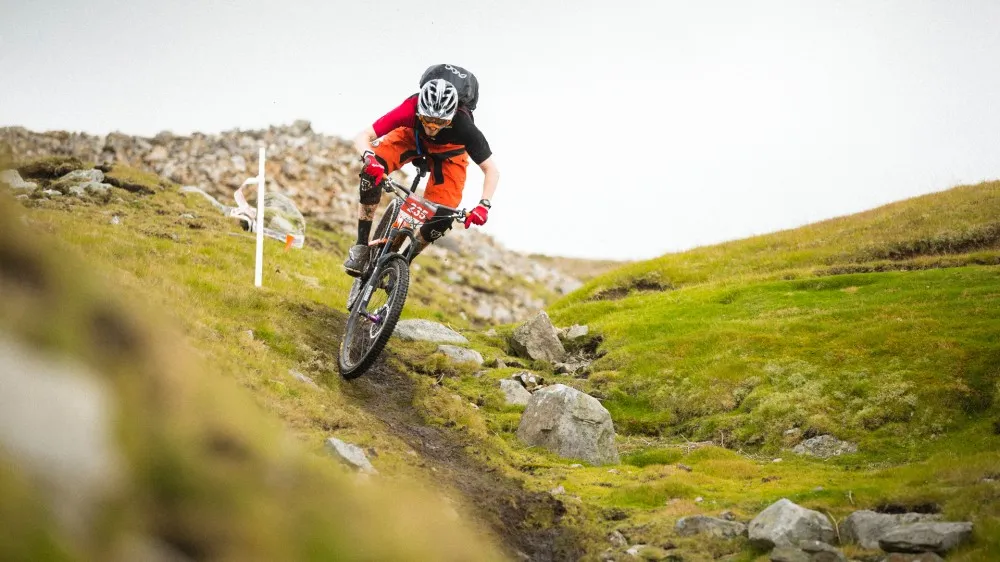
Find your flow and try to minimise heavy braking for better average speed
Pump – pumping can be faster and much safer than pedalling through rougher sections, keeping your feet level and clear of the hazards. Drive down into the downslopes for free speed.
Optimum speed – find the speed of the trail and use it. Highly technical sections have a narrow speed range; going too fast or too slow through them can be hazardous.
Speed scanning – keep your head up and continually plan your line as you ride, spotting your ribbon of trail to the next feature.
State of mind – if you’re tense and anxious it’ll show in your riding, in the form of mistakes and crashes. Relax your thoughts and focus on smoothing the trail. You might feel slower, but smoother is faster.
Link the trail – join difficult sections of track by focusing on the easy parts like a dot-to-dot. If you concentrate on the hard sections too much you’ll struggle to keep momentum throughout.
Switchbacks
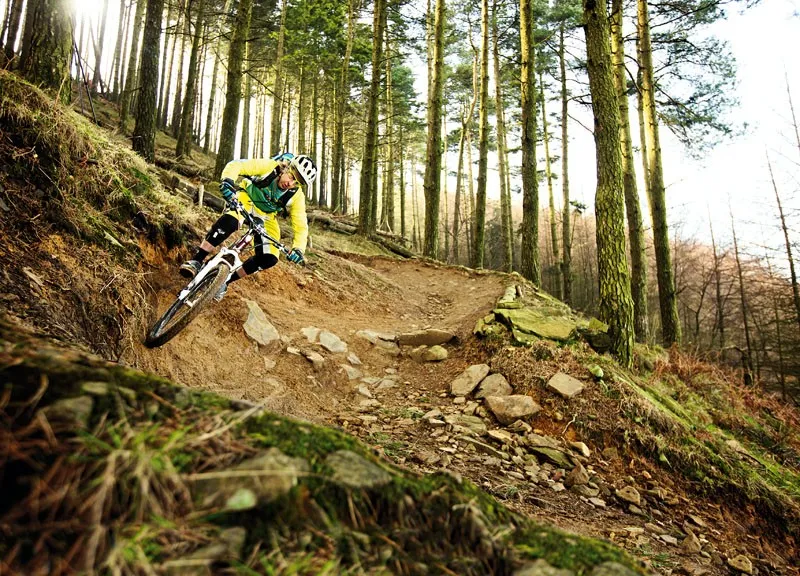
Practise these speed sapping switchback corners so you can nail them on race day
Make it big – scrub off speed and use as wide entry as possible, to get the turning done safely and early.
Head up – keep your head up and eyes looking through the turn. If you’re watching your front wheel, you can’t see your exit.
Turn through – keep your elbows bent and stay low, don’t hang off the back of the bike as you’ll loose the front wheel. Turn your hips and body through the turn, and the bike will follow.
Keep rolling – keep the front wheel rolling throughout the turn. Don’t over brake or lock it up, otherwise you’ll go off the edge or over the bars.
Tight – in very tight turns, sometimes the only way is to get the back end out, either by pivoting on the front wheel, or skidding it around.
Squash
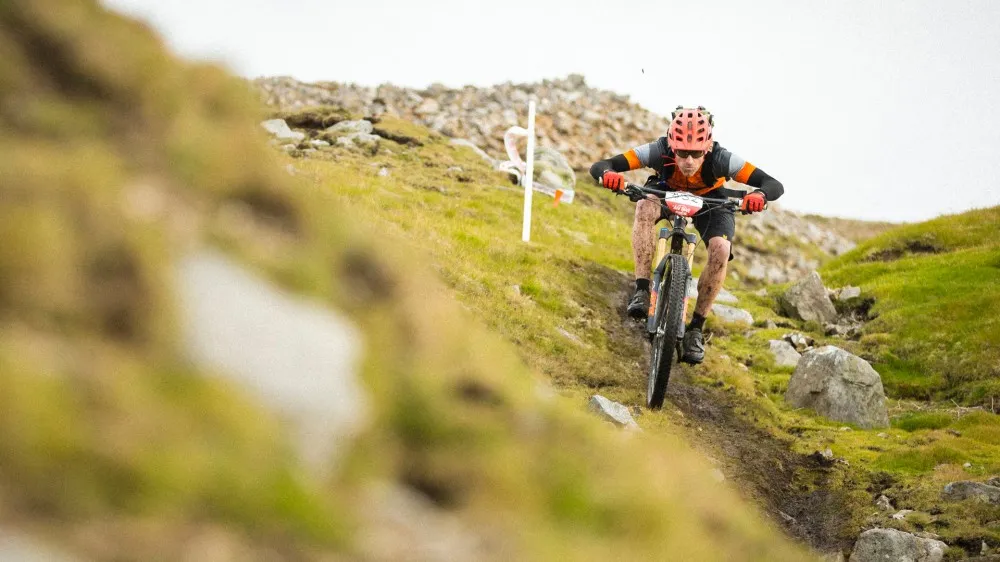
Squashing drops and getting on the ground as soon as possible will keep you in control and help you ride more smoothly
Speed – approach the drop with speed in a balanced body position with your pedals level, keep your head up and spot the landing, then look to your exit.
Drop and extend – drop your hips back and low dynamically, as your front wheel leaves the edge. Extend the bike out ahead of you to keep it level with the landing.
Pressure release – unweight your feet as the rear wheel leaves the edge, as you continue to drop your body weight towards the landing.
Feet control – relax and bring the extended bike back under your feet for the landing. Arms and legs should be extended, ready to absorb the impact.
Landing smoothly – land with both wheels together and absorb as much impact through the legs as possible. Keep your head up and look down the trail.
Cornering
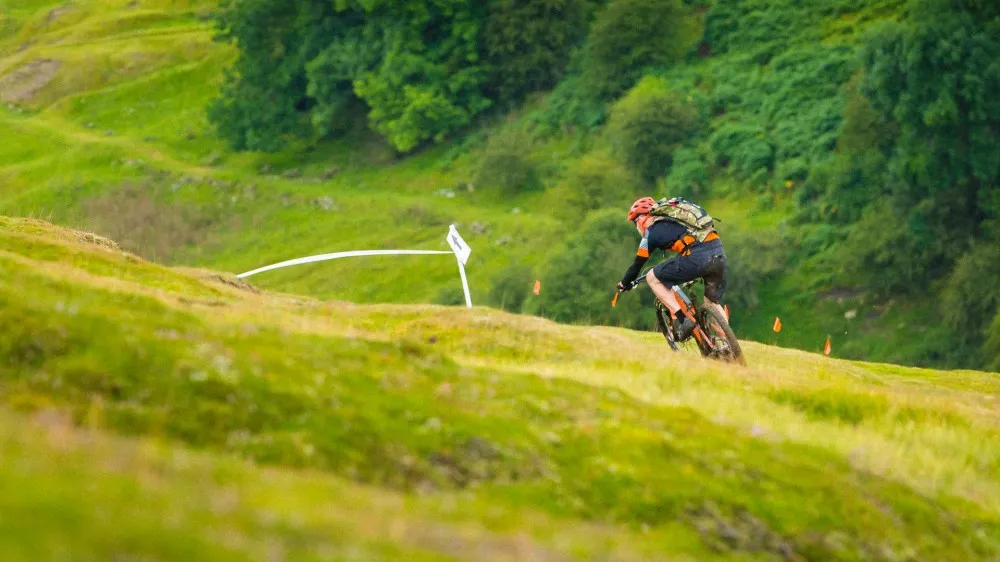
Practising your cornering technique will help you ride faster on every trail. Corners are the one thing every race track has in common
Cover the brakes – scrub your speed off before the turn and stay off the brakes during it. Braking hinders both turning traction and balance in the corner. Slow in fast out.
Head – keep your head up and look to the exit of the turn. The more you read the trail ahead of you, the faster you can go while planning your next line.
Body position – get low and initiate the turn with your hips. Support your weight with your legs and try to keep your hands light so you can lean the bike.
Hips – turn your hips towards the exit of the corner, which will allow the bike to lean underneath your body. Push your weight through your outside pedal if you need extra grip.
Lean it – the most common reason for overshooting a corner is a lack of leaning the bike. If you’re going to ride fast you need to learn to lean.
Gearing – try to match your gears to your exit speed so you can hit the power as soon as you exit the turn.
Technical sections
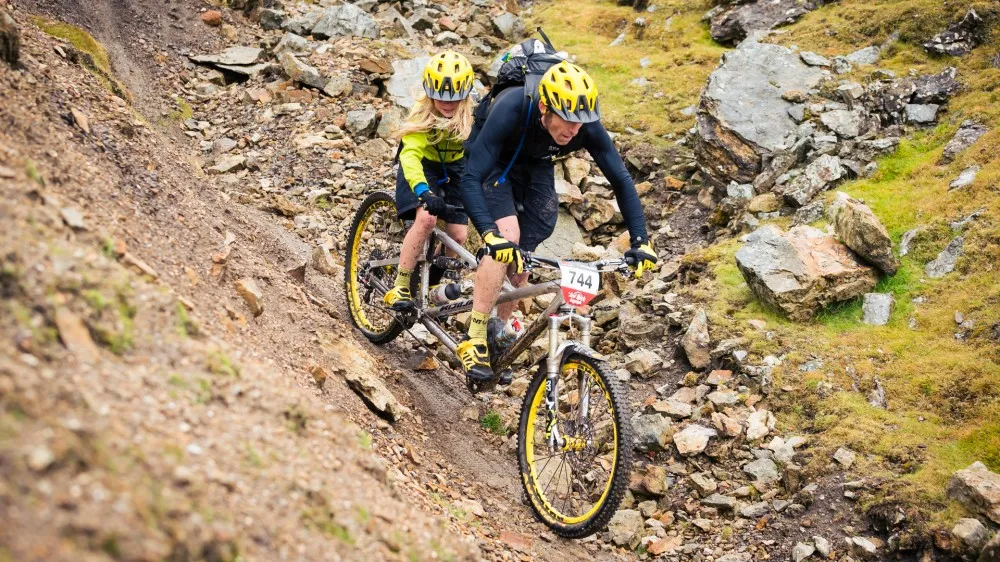
Practising technical sections that you aren’t comfortable with will improve your confidence and help you get it right when the pressure is on
Line – the fastest line for one rider might not be the same for another. High risk lines (for your ability) can be costly if it goes wrong.
Speed check – set your speed before the technical section to avoid excessive braking, which will hinder your balance and tyre traction.
Body position – stay low and balance over your bottom bracket as the bike pitches. Think about keeping your head up, hands light and using your feet as a base of support to stay in balance.
Pressure control – unweight your bike over square edges and harsh impacts that would otherwise kill your speed or knock you out of balance.
Focus – clear those negative thoughts and stay focused on the task in hand. Choose a few key words that help you ride better, for example ‘stay loose’ and ‘smooth’.
Pro Ride mountain bike coaching
Pro Ride is an elite mountain bike coaching team that runs skills training sessions in the UK. The team is headed up by Joe Rafferty, who has 10 years coaching experience, organises the ‘Ard Rock Enduro and loves riding in the Alps and the crazy Megavalache, where he’s finished ninth. Highly experienced coaches and elite riders Ben Deakin and Joe Flanagan are also part of the team, as well as two of the UK’s fastest enduro racers, Phil and Sam Shucksmith.
For more info visit prorideguides.com

